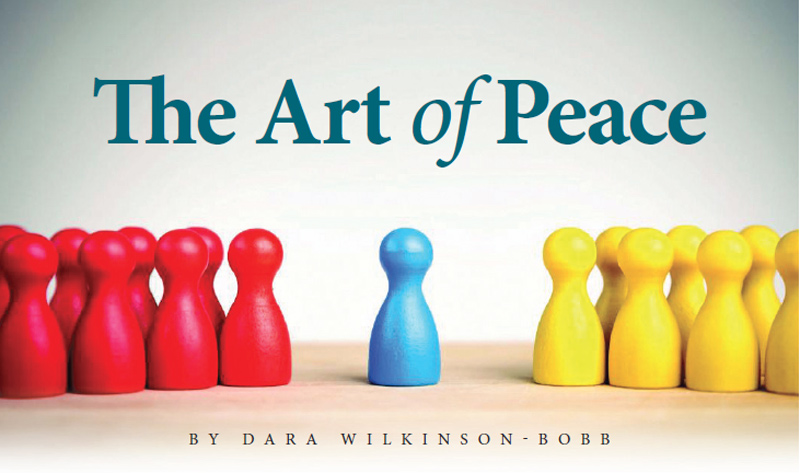 |
 |
 |
|
September 2015 |
On a diverse campus with a large population of mixed ages, races, backgrounds, genders and worldviews, there is bound to be conflict. After all, a university campus is a microcosm of the world outside. “Mediation negotiations are about agreements,” says Ann Diaz, Programme Co-ordinator of The UWI’s Mediation Unit, which seeks to develop skilled practitioners in the art of making peace. She was facilitating a two-day mediation workshop which had attracted the attention of representatives from law firms, trade unions, the coast guard, a church and firms in the financial services sector and airline industry, among others. Feature speaker on the first day of the programme was attorney and chaplain Adrian Sieunarine who introduced participants to the idea of Interpersonal STARS. STARS, he explained, is an acronym for sensitivity, tolerance, assertiveness and restraint – all key components to successful interactions. The yin-yang of sensitivity and assertiveness implies a willingness to receive the other person gently while holding one’s ground when necessary. Sieunarine traced the trajectory of thoughts into feelings, then habits. These in turn shape behaviour, character and, ultimately, lifestyle. For students just embarking on a tertiary education, much of the information inputs that will form the foundation of their careers will be drawn from their years at The UWI and the development of critical thinking ability. Indeed, the formative years of childhood into youth as well as these very crucial years of intellectual growth and challenge will strongly influence that first stage: thoughts. The term “conflict” is defined in the dictionary as serious disagreement, and also, an antagonistic state or action. The ability to clearly analyse a particular problem can greatly influence the outcome of the conflict. Sieunarine points out that hasty words often have long-lasting negative effects. Life often makes circles and it is far better to use this time to be collaborative and build linkages for the future. “Many people in our society grow up thinking of who we are against. We need to change that culture and learn to work together. It is a massive cultural shift,” says Sieunarine. Skillful mediation is simply the art of peace-making. Armed with the right tools, you can take gentle control of a conflict situation. According to Sieunarine, “If you have the skill to unite and guide people, you will have an amazing victory. Do not divide and conquer. Unite and guide.” To learn more about mediation, please contact the Mediation Unit, Faculty of Social Sciences. T: 662-2002 ext. 82539, 82617; email: Rohan.Mack@sta.uwi.edu Dara Wilkinson-Bobb is an assistant lecturer (p/t) in the Writing Centre of the Faculty of Humanities and Education Mediation and Conflict Resolution GuidelinesWhen not to add fuel to a confrontational situation. Can you read people? Even if not overtly so, can you tell when someone is upset? Separate the issue from the person. Try to perceive when a history of negative interactions or other biases are colouring our own contributions to the actual discussion at hand. Be Open. At some point it may be necessary to say when you’re uncomfortable with a situation or how aggressively the other person is pursuing a position. Manage your body language. “Don’t steups and slam the table,” says Sieunarine. Another step backwards, Sieunarine says, ‘is rolling your eyes and contorting your face in an asymmetrical way to convey contempt and condescension. Practice smiling instead.’ Watch your language, particularly word choices. Use simple, non-threatening language. Think through the words you use and how those words relate to the background from which others are coming. Don’t interrupt others and diplomatically ask them not to interject when you are speaking. Use empathy to build relational bridges. Generally speaking, subconsciously people are resistant to change and to learning new things. What might initially be mistaken for stubbornness might eventually be seen, by standing in the other’s shoes, as fear of abandoning “certainties” and comfort zones. Speaking voice. Lower a loud voice, project if you have a soft voice, and modulate your tones if you have a shrill voice. |

